Can Buildings Be Art?
5 museums to see in your lifetime
Most people visit museums to look at great art. But sometimes, the museum itself is the art.
Today, we explore five museums that are just as beautiful as the works they contain. Our list is arranged in order of the artistic traditions that shaped them, starting with Baroque Italian and moving towards the 20th century.
Each of these museums reflects the ideals of its period, not only through the paintings and sculptures on display, but through every aspect of the space itself. The ceilings, staircases, and interior architecture of these buildings are designed to inspire and surround visitors with the same spirit that produced the collections they house.
To step into these museums is to encounter an older idea of beauty — one that extends beyond the canvas, and into one’s very surroundings…
Reminder: you can support our mission and get tons of members-only content for a few dollars per month:
Full-length articles every Wednesday and Saturday
Members-only podcasts and exclusive interviews
The entire archive of great literature, art, and philosophy breakdowns
1. Galleria Borghese, Rome
Cardinal Scipione Borghese commissioned this villa in the early 1600s as a place to showcase his growing art collection and host visiting dignitaries. The result is a model of Baroque architecture that is abundantly thoughtful, theatrical, and rich in visual detail.
The rooms in the Galleria Borghese are framed by frescoed ceilings and marble floors, with stucco ornamentation filling every corner. Bronze busts and painted panels surround you from all sides as some of history’s most iconic sculptures — such as Bernini’s Apollo and Daphne, The Abduction of Proserpina, and David — command the center of each gallery.
The rooms of the Galleria Borghese were never meant to serve as a neutral backdrop. Every surface contributes to the experience of the art contained within, and amplifies the emotional force of the works on display. Even without its extraordinary collection, the villa would remain a complete expression of Baroque decadence — built to impress, and impossible to forget.
2. Cappella Sansevero, Naples
Hidden in the heart of Naples, the Cappella Sansevero was built as a private family chapel and later renovated by the 18th-century nobleman Raimondo di Sangro. An eclectic soldier, alchemist, and patron of the arts, Raimondo oversaw every detail of the chapel’s decoration — from enhancing its dramatic lighting to filling it with layers of hidden religious and philosophical meaning.
The interior of the chapel is small but overwhelming. Stucco angels and Latin inscriptions crowd the walls, and a frescoed ceiling opens onto a vision of the heavens. In the midst of it all lies the chapel’s most famous work — The Veiled Christ by Giuseppe Sanmartino. Sculpted in 1753, the marble shroud that covers Christ’s body is carved with such delicacy it appears transparent.
Every detail in the chapel contributes to the atmosphere, as even the labyrinthine pattern of the original flooring was meant to echo spiritual ascent. It all makes for a space where sculpture, architecture, and esoteric mystery are intricately intertwined.
3. Musée Jacquemart-André, Paris
Located just off the Boulevard Haussmann in Paris, the Musée Jacquemart-André was originally the private residence of Édouard André and Nélie Jacquemart. The wealthy couple spent their lives collecting artwork, and their house was opened to the public after their deaths — preserved almost exactly as they left it.
The museum’s many drawing rooms and galleries are each furnished in the refined style of the French aristocracy, with everything from silk wall coverings to painted ceilings. A sweeping double staircase commands attention at the center of the house, and a plant-filled, glass-ceiling atrium showcases a collection of statues.
Unlike most museums, the Jacquemart-André offers no separation between the art and the world that once surrounded it. The arrangement of each room reflects the couple’s personal vision, as paintings by Botticelli, Van Dyck, and Fragonard still hang in their original placements alongside gilded furniture and Venetian chandeliers.
The result is a museum that preserves both art and a way of life. There is perhaps no greater a window into the opulent and elegant world of the 19th-century art collector.
4. The Frick Collection, New York
Tucked behind a row of iron gates on Fifth Avenue, the Frick Collection occupies what was once the private residence of Henry Clay Frick — a steel magnate who spent his final years assembling one of the greatest art collections in America. After his death in 1919, the house was converted into a museum, with instructions that the works remain where he had placed them.
The galleries in the Frick feel more like drawing rooms than exhibition halls, as natural light filters through curtains while paintings by Vermeer, Titian, and Rembrandt hang above marble fireplaces. A quiet garden court opens near the main galleries, where a fountain trickles softly under the glass canopy.
Unlike most museums in New York, there are no labels on the walls and no crowds packed into corners. To visit it is to experience not only the quality of the collection, but the formal and austere sensibility of the man who built it.
5. Museu Nacional d'Art de Catalunya, Barcelona
Set above the city on Montjuïc Hill, the Museu Nacional d’Art de Catalunya occupies the Palau Nacional — a palace built for the 1929 International Exposition and designed to showcase the cultural ambitions of modern Spain. Its facade towers over the city below while its domes, colonnades, and vaulted halls echo the architecture of empire.
Inside, the museum houses one of the world’s finest collections of Romanesque frescoes, many of them rescued from crumbling churches in the Pyrenees mountains. These are joined by Gothic altarpieces, Renaissance paintings, and Catalan works from the 19th and 20th centuries.
With its art displayed in majestic, at times even imposing, galleries, the Palau Nacional was never meant to be modest. It is a national museum in the fullest sense — constructed not just to preserve art, but to project strength and pride in Spain’s unique cultural identity.
Thanks for reading!
Remember, you can support us and get members-only content every week: great literature, art, and philosophy breakdowns.
Paid readers can access our *entire* archive of premium articles right here.
This weekend, we dive into the history of Western art. We look at the forces that shaped it from the beginning, and how artists figured out something impossible — how to paint the infinite…



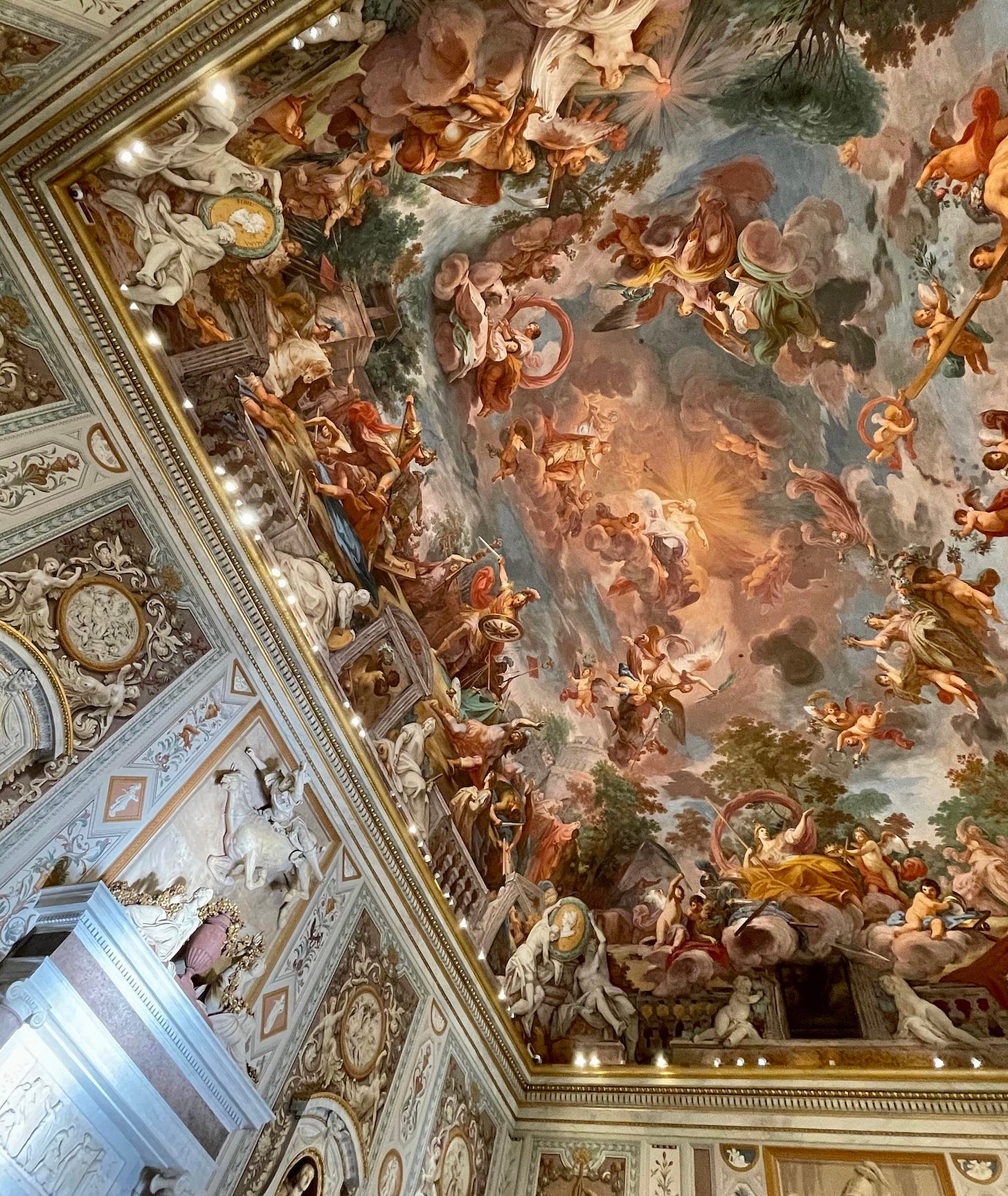
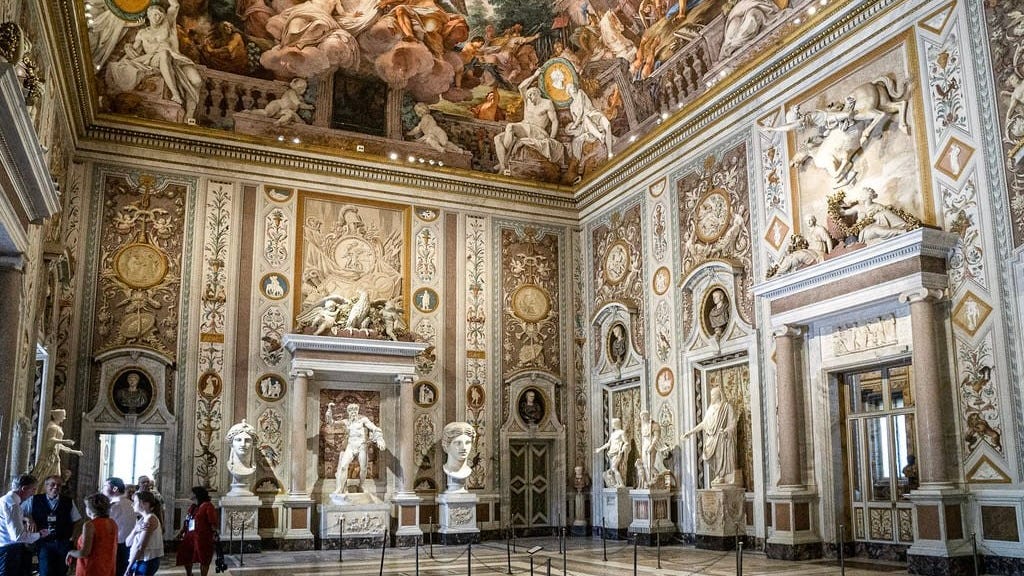
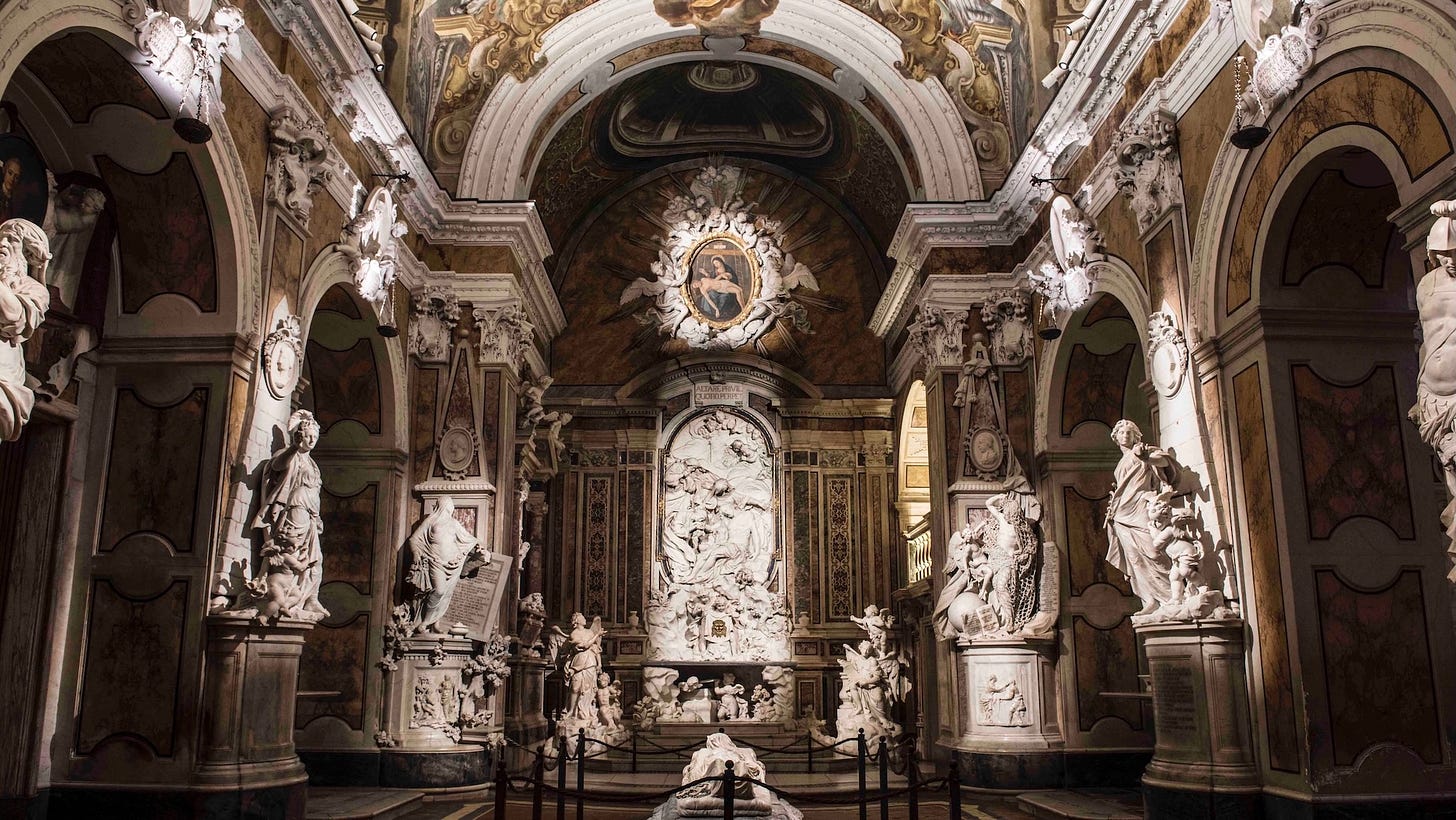
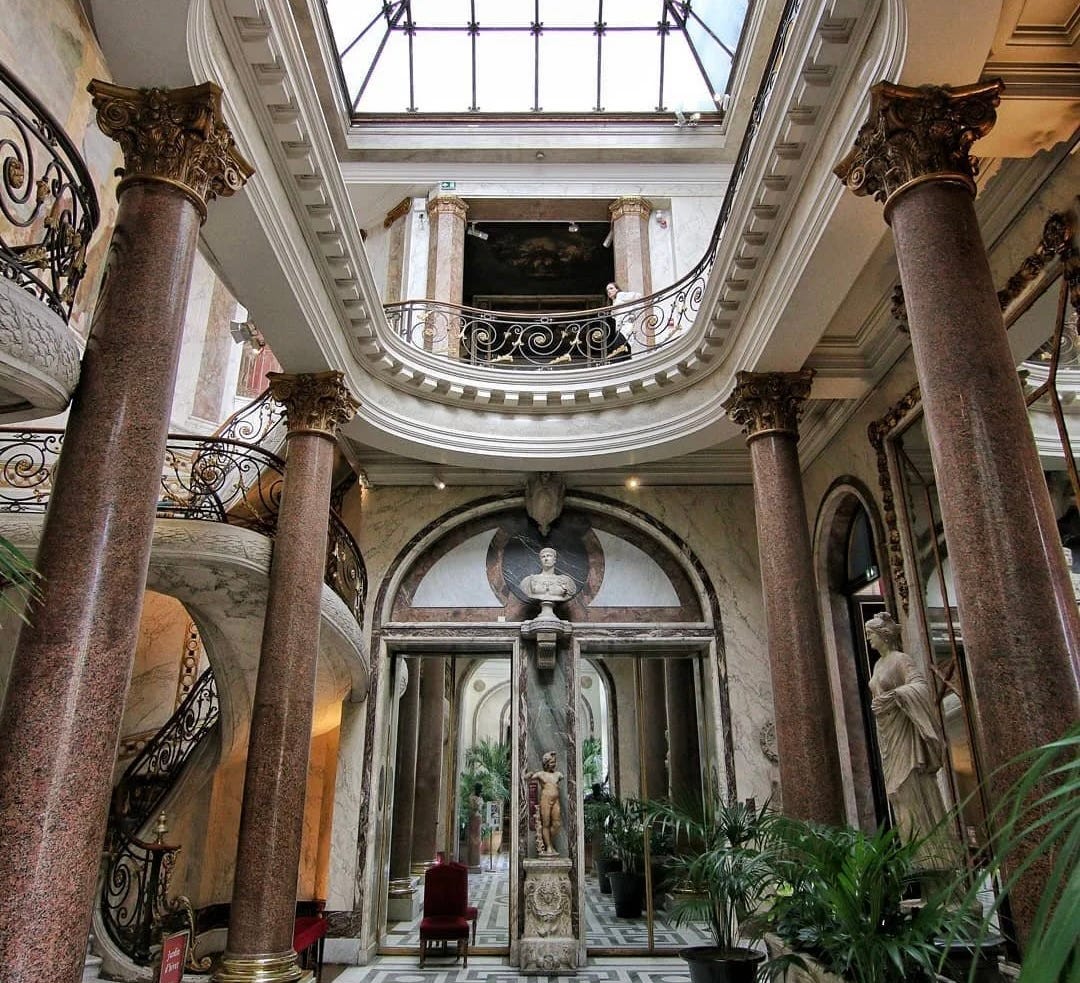
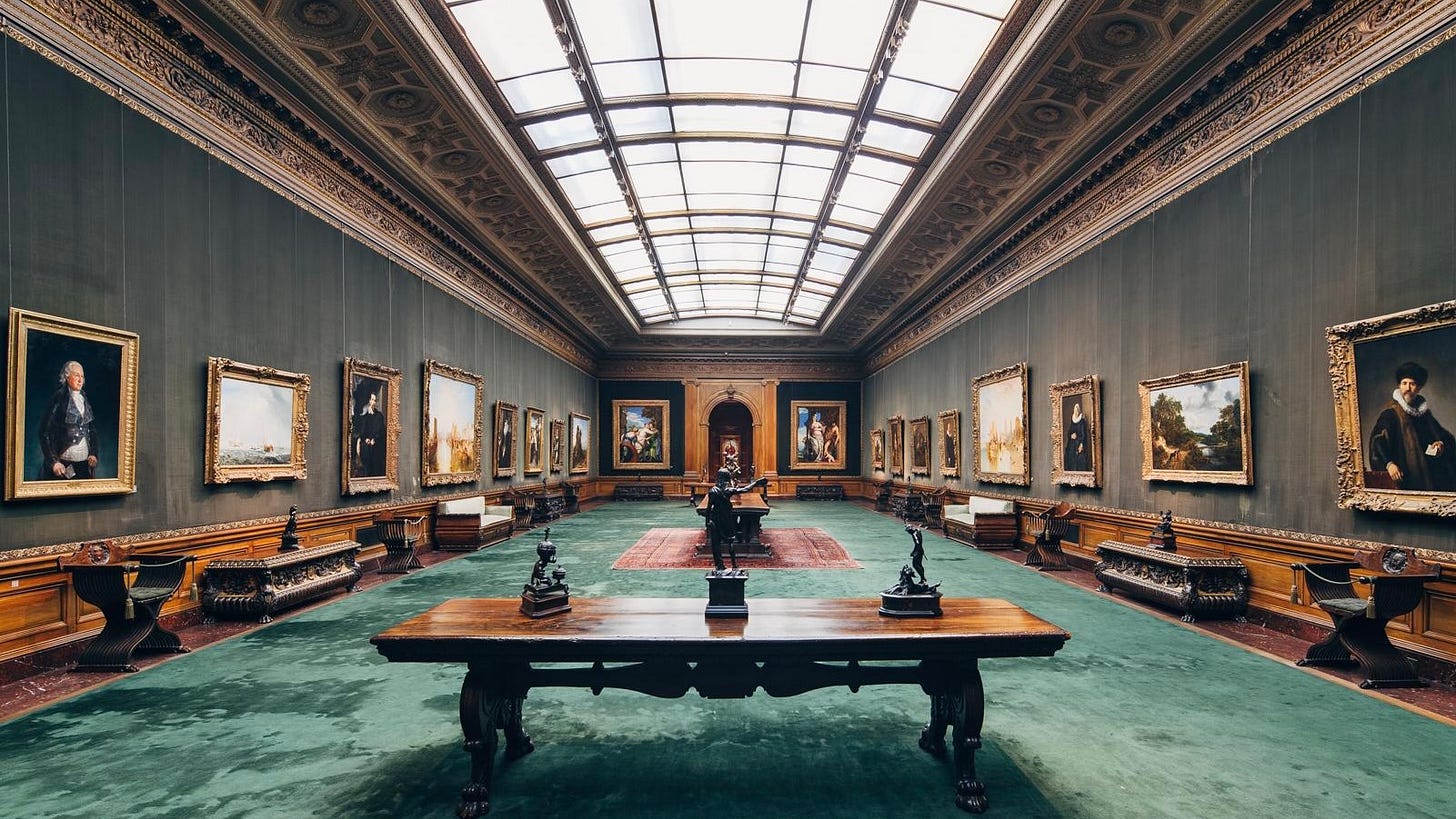
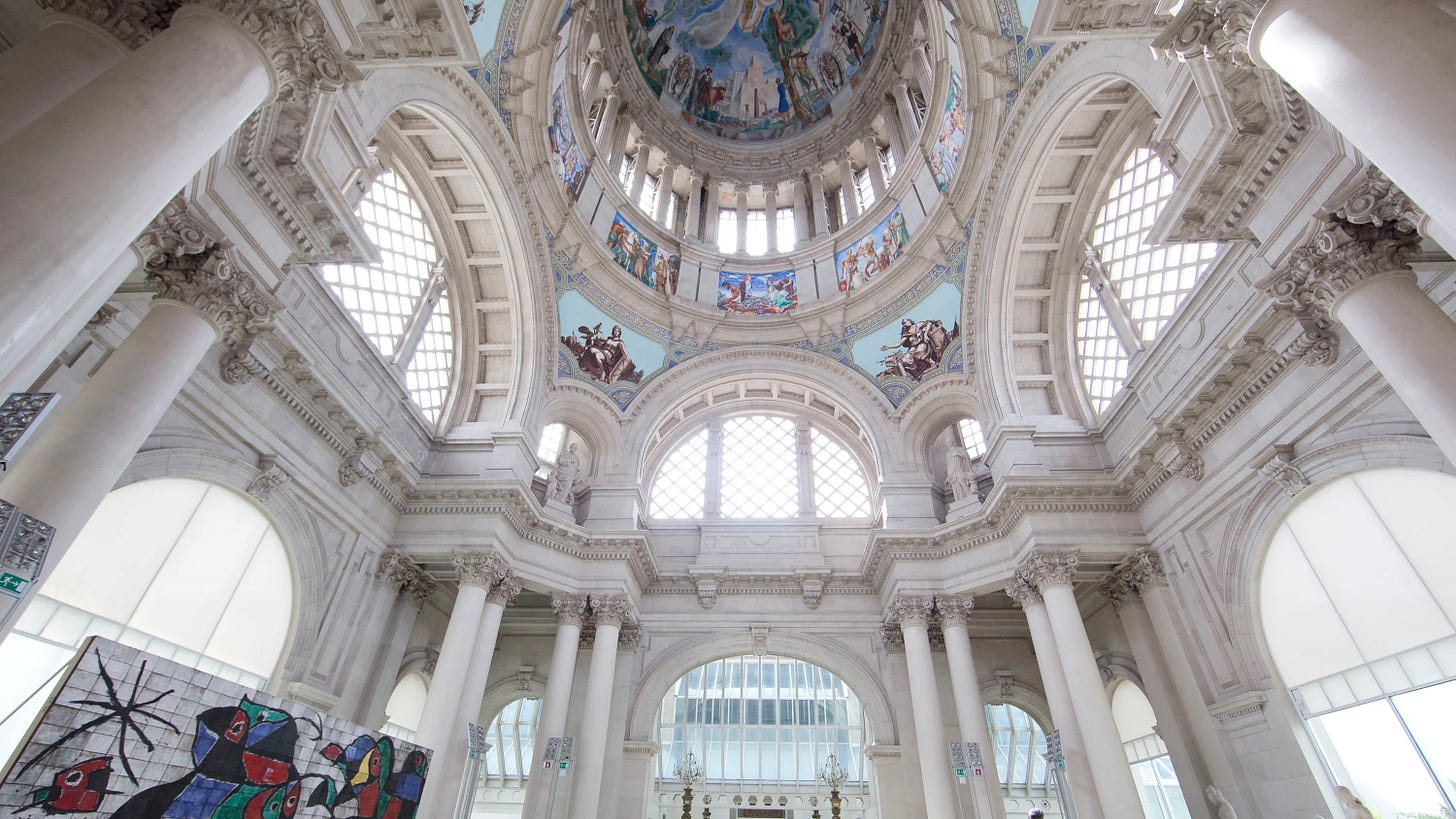
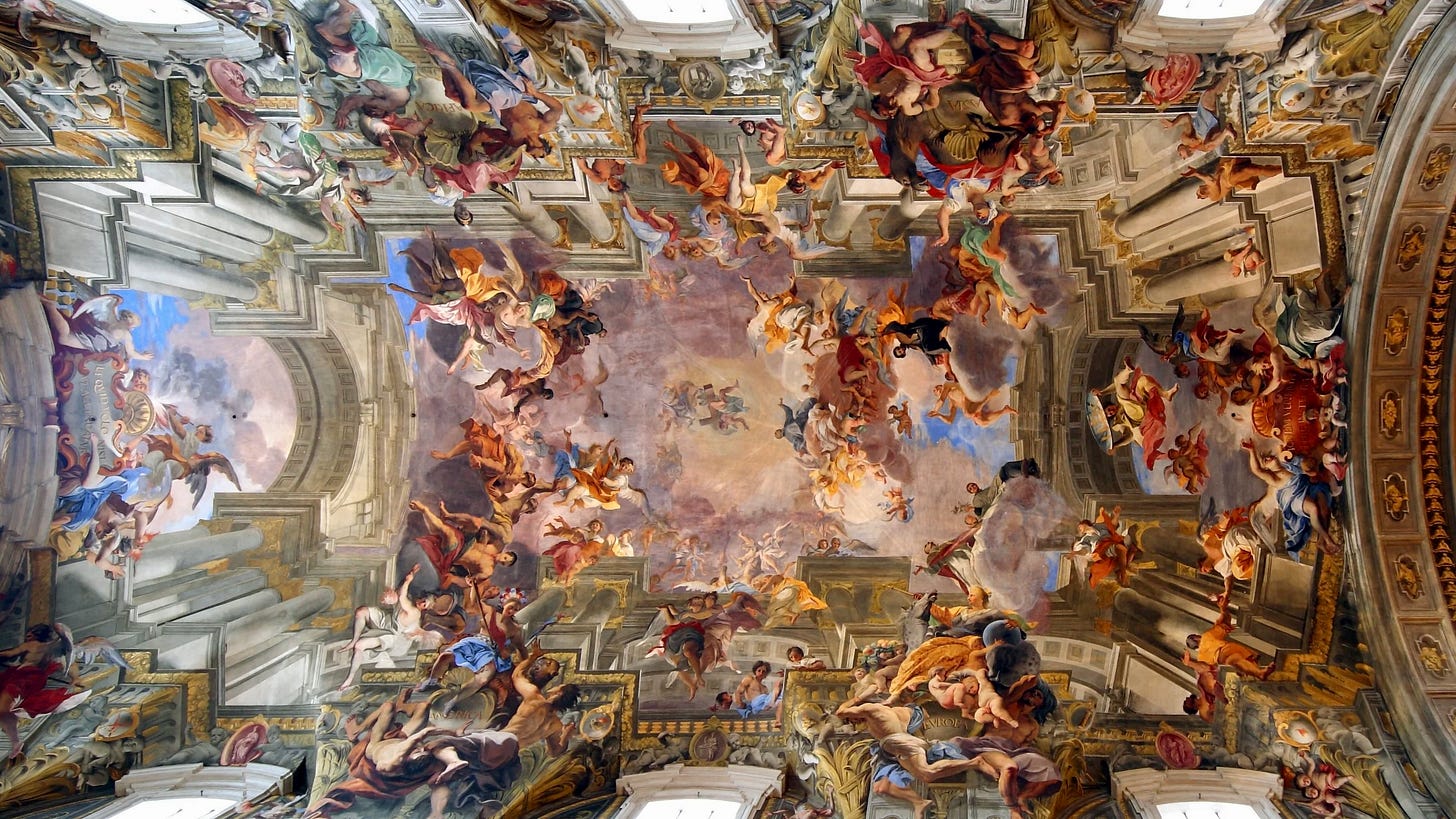
Yes
You know the blog is good when you like and save the post before you read ♥️